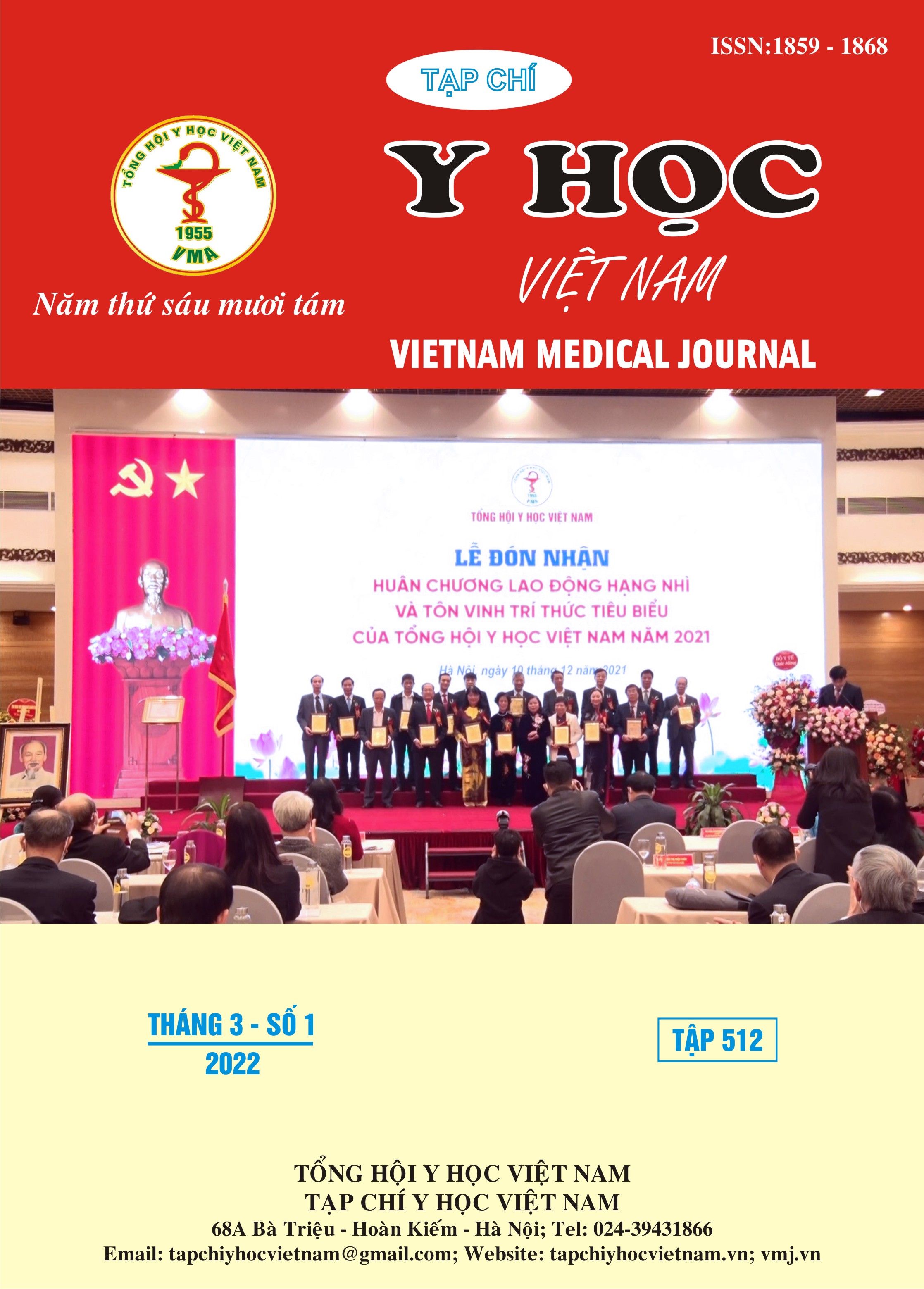BONE QUALITY ASSESSMENT ON PATIENTS HAVING AN INDICATION FOR DENTAL IMPLANTS
Main Article Content
Abstract
Background: Dental implants are an effective, most advanced and long-lasting treatment method in case of patients with tooth loss, especially those that locate at the back of the dental arches. The success rate and predictive success of dental implants depend on many factors, in which the quality assessment plays an important role. Methods: Including 37 patients (47 missing teeth) with maxillary molar loss indicated for dental implant treatment at Odonto-Stomatology Center, Hue Central Hospital from March 2021 to October 2021. Study design: Descriptive cross-sectional study. Results: The mean age was 49.32±14.45 years old, the mean age of men was 46.60±13.75 years old, the mean age of women was 52.53±14.98 years old. The most common cause of tooth loss is tooth decay, accounting for 70.2%. The time of tooth loss > 24 months accounted for the highest rate (63.8%). The average bone density was 894.04±200.62 HU, the smallest was 620 HU and the largest was 1350 HU. Conclusion: Bone density plays an important role in choosing the surgical method as well as predicting the success rate of implants. The assessment of bone quality is to make an accurate surgical plan.
Article Details
Keywords
bone density, dental implants
References
2. Liên LH, Toại N, Phước TT, et al. (2011). Đánh giá kết quả ứng dụng kỹ thuật cấy ghép nha khoa (Implant) trong phục hình, in Đề tài Khoa học & Công nghệ cấp Bộ năm 2011 Khoa Răng Hàm Mặt, Trường Đại học Y dược Huế.
3. Anitua E, Prado R, Orive G (2009). A lateral approach for sinus elevation using PRGF technology. Clin Implant Dent Relat Res, 11 Suppl 1: e23-31.
4. Anitua E, Flores J, Alkhraisat MH (2016). Transcrestal Sinus Lift Using Platelet Concentrates in Association to Short Implant Placement: A Retrospective Study of Augmented Bone Height Remodeling. Clin Implant Dent Relat Res, 18(5): 993-1002.
5. Barbu HM, Andreescu CF, Comaneanu MR, et al. (2018). Maxillary Sinus Floor Augmentation to Enable One-Stage Implant Placement by Using Bovine Bone Substitute and Platelet-Rich Fibrin. BioMed Research International, 2018: 6562958.
6. Nguyên TM (2012). Nghiên cứu đặc điểm lâm sàng, X quang và đánh giá kết quả phương pháp nâng xoang hở có ghép xương, Luận văn Thạc sỹ Y học, Trường Đại học Y Hà Nội.
7. Cúc B (2018), Nghiên cứu đặc điểm lâm sàng, cận lâm sàng, đánh giá kết quả điều trị bệnh nhân mất răng hàm trên phía sau bằng phương pháp nâng xoang hở, ghép xương và cấy ghép implant một thì tại Bệnh viện Mắt - Răng Hàm Mặt Cần Thơ năm 2017-2018, in Luận án chuyên khoa cấp II, Trường Đại học Y Dược Cần Thơ.
8. Việt ĐV (2013). Nghiên cứu điều trị mất răng hàm trên từng phần bằng kỹ thuật implant có ghép xương, in Luận án Tiến sĩ Y học, Trường Đại học Y Hà Nội.


